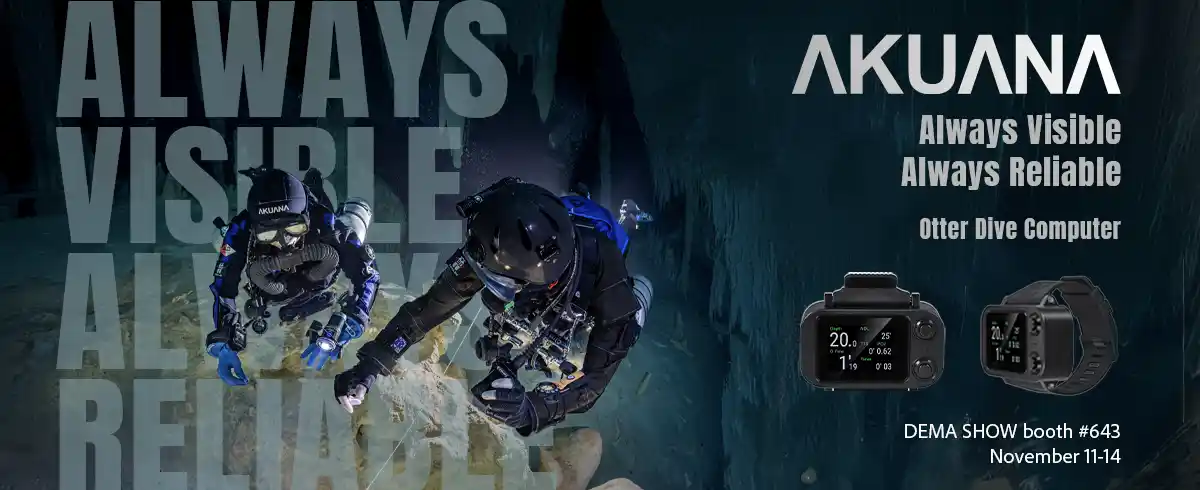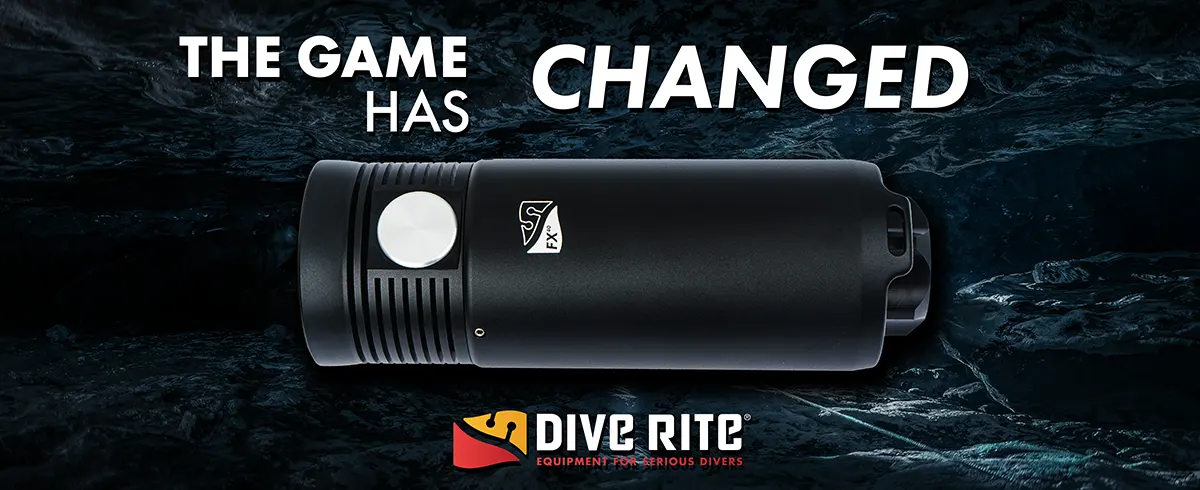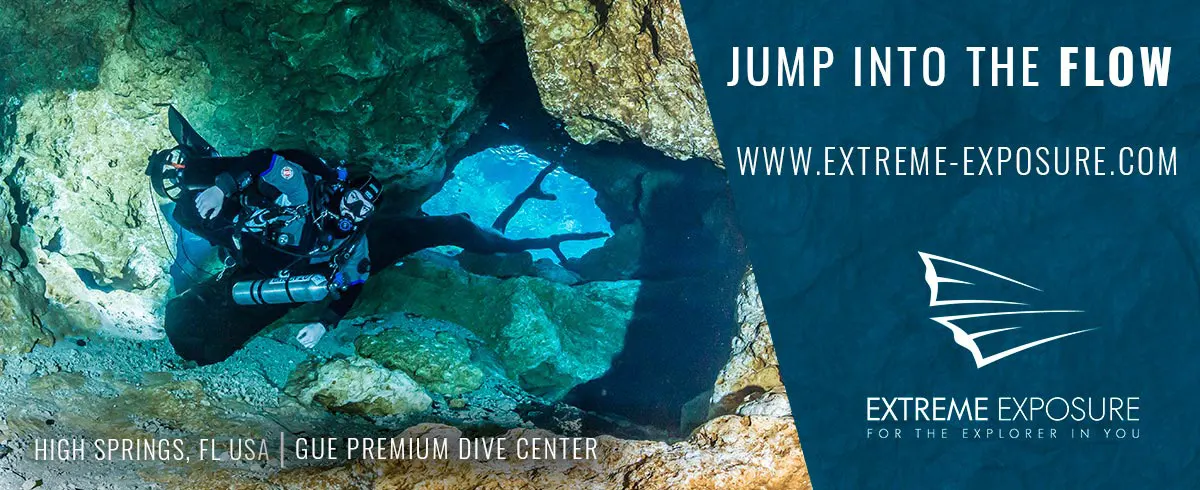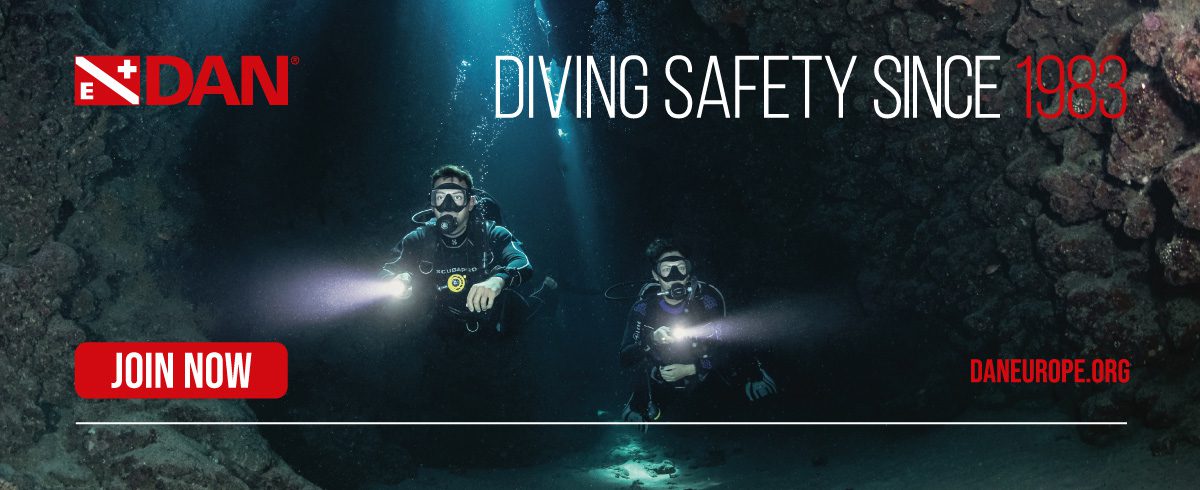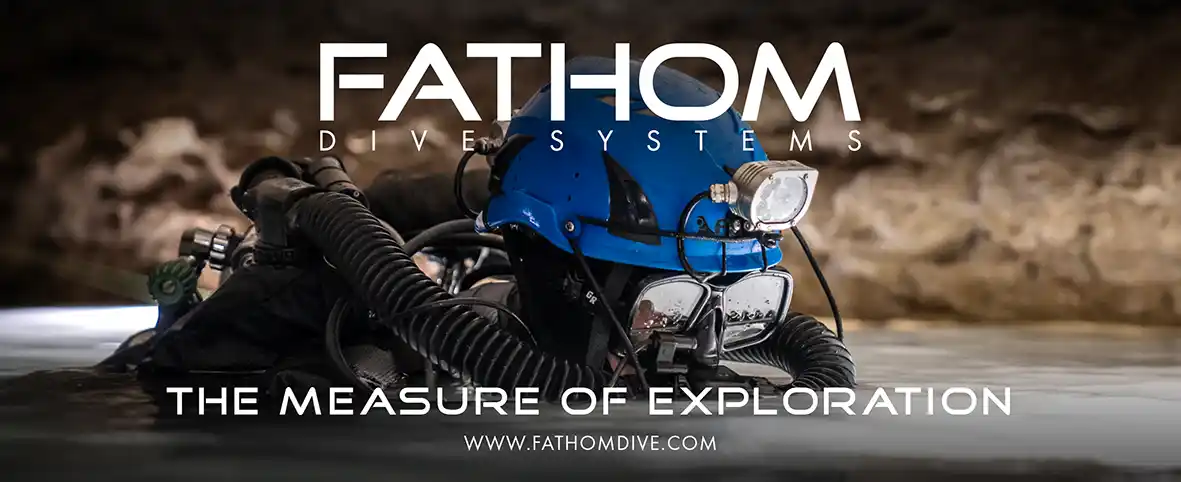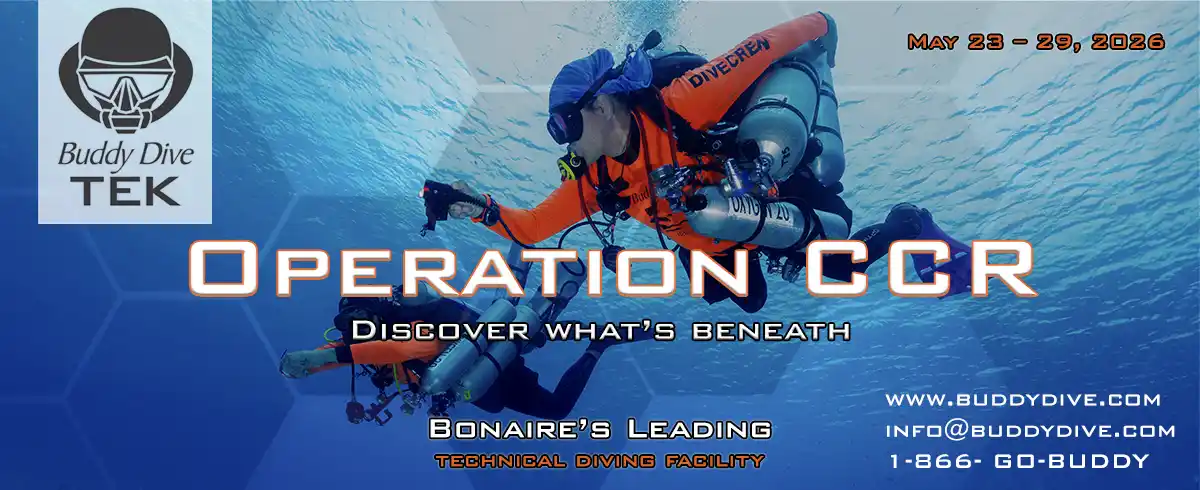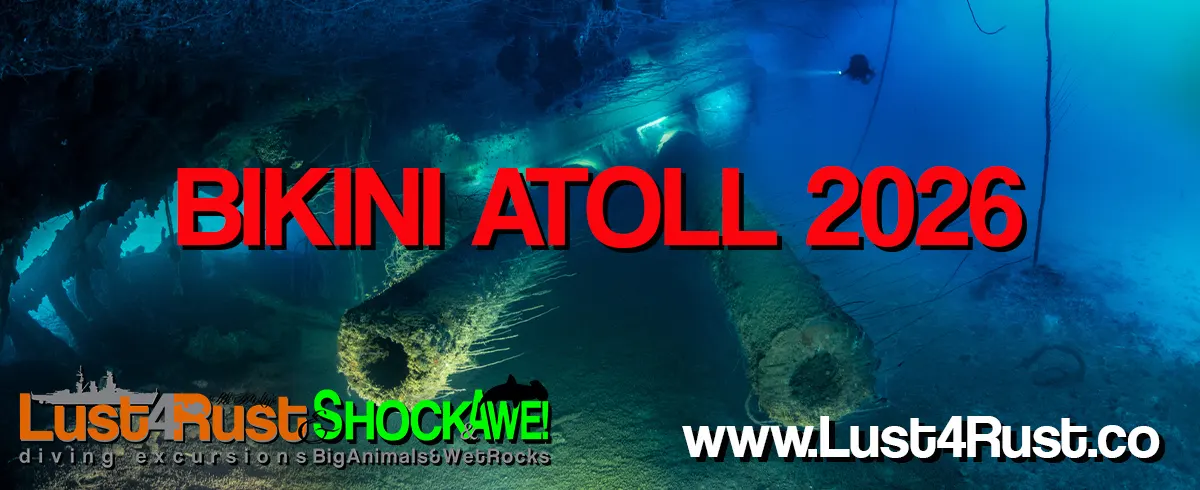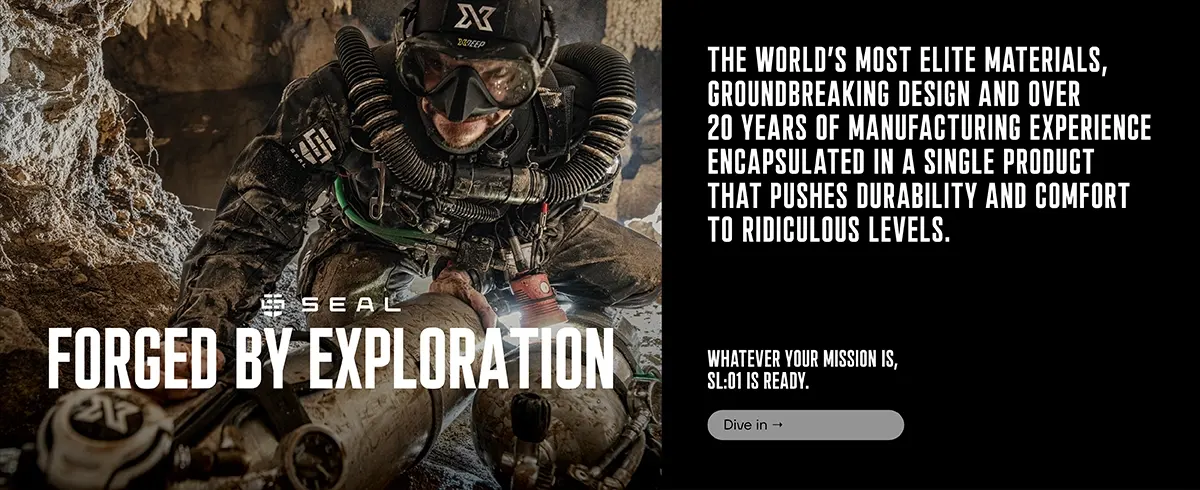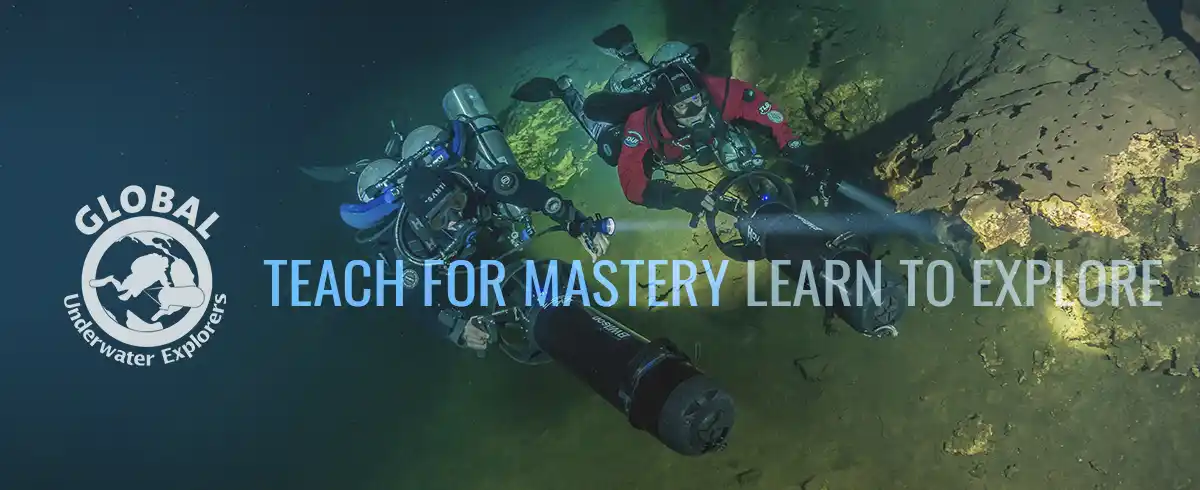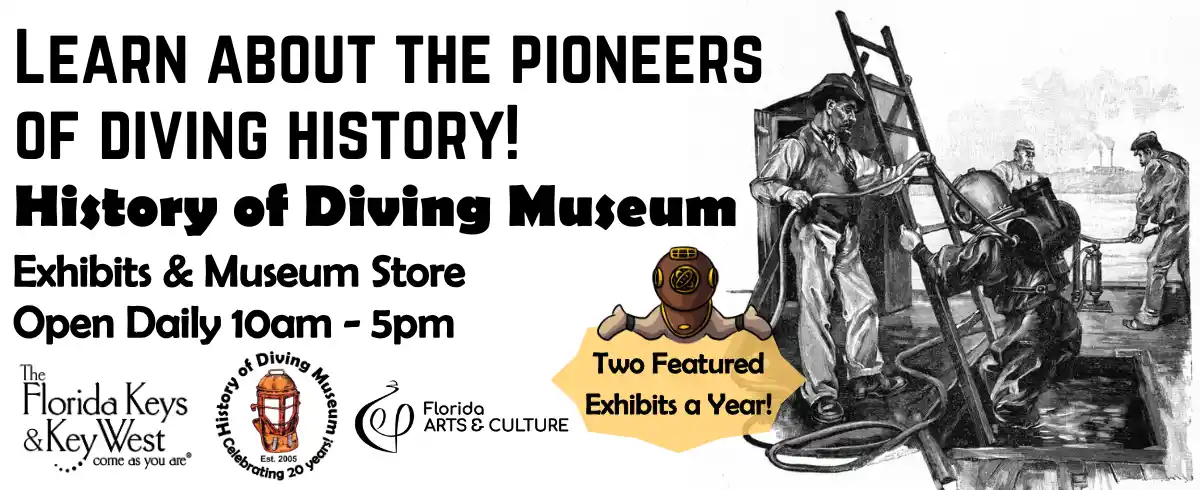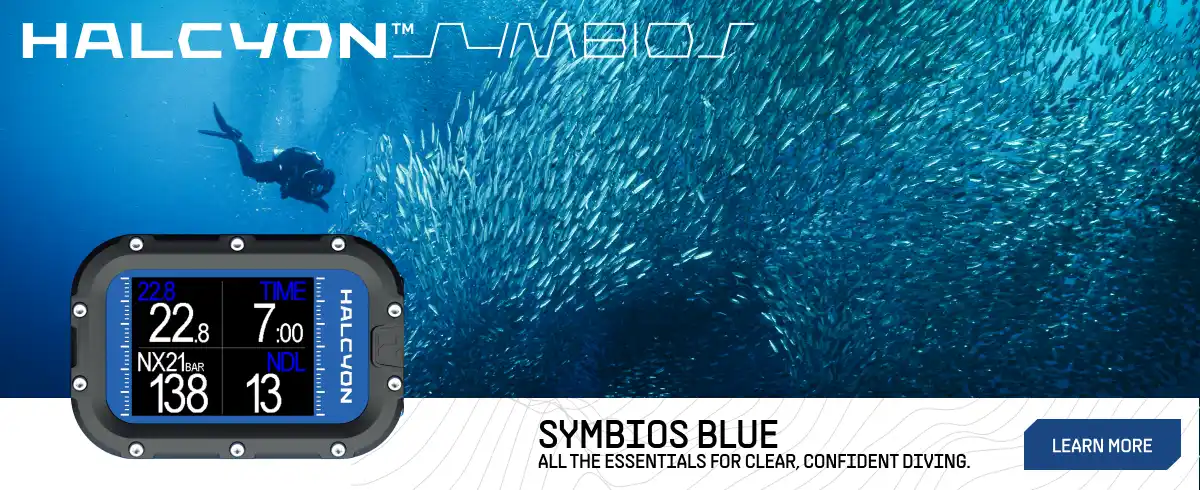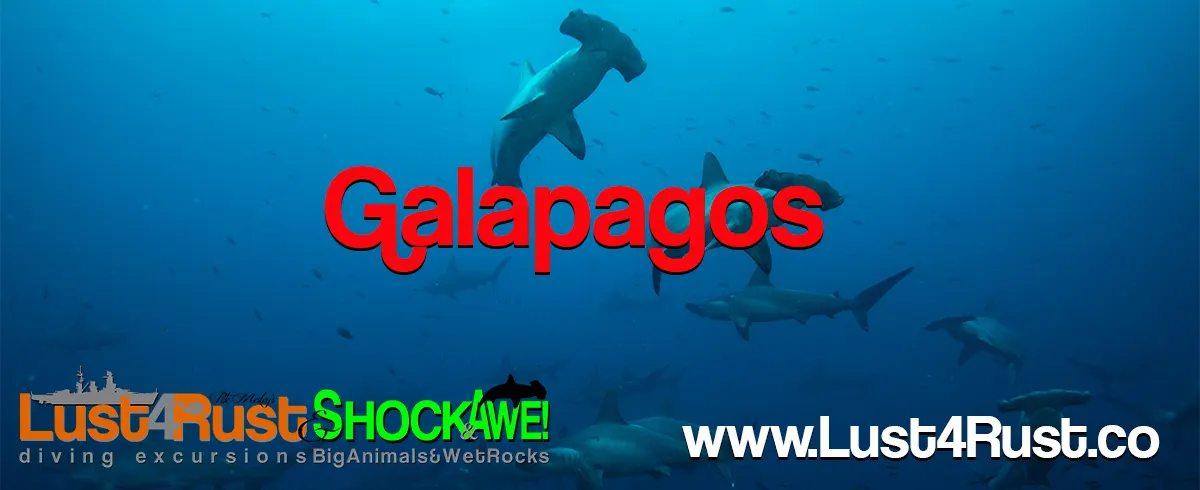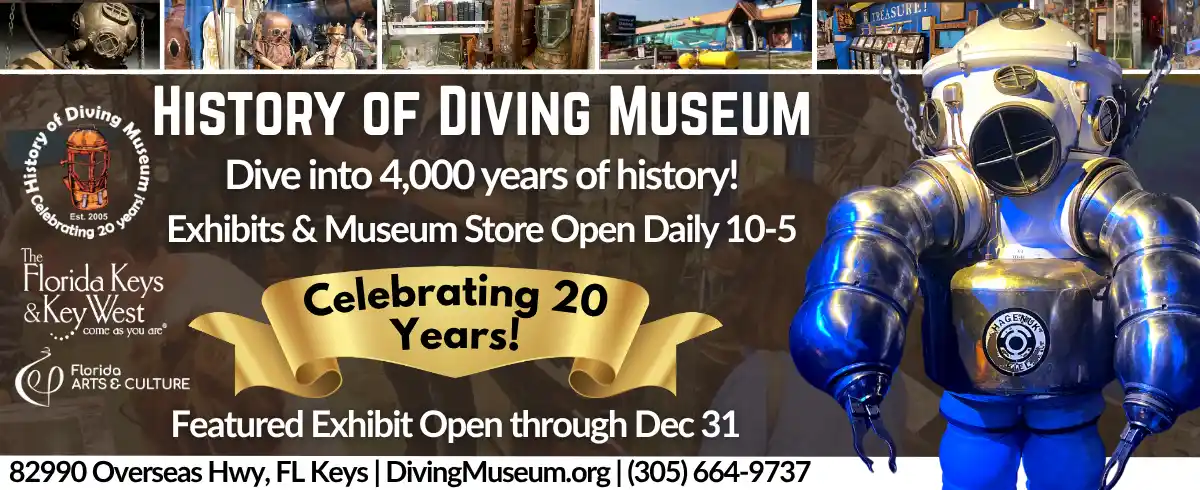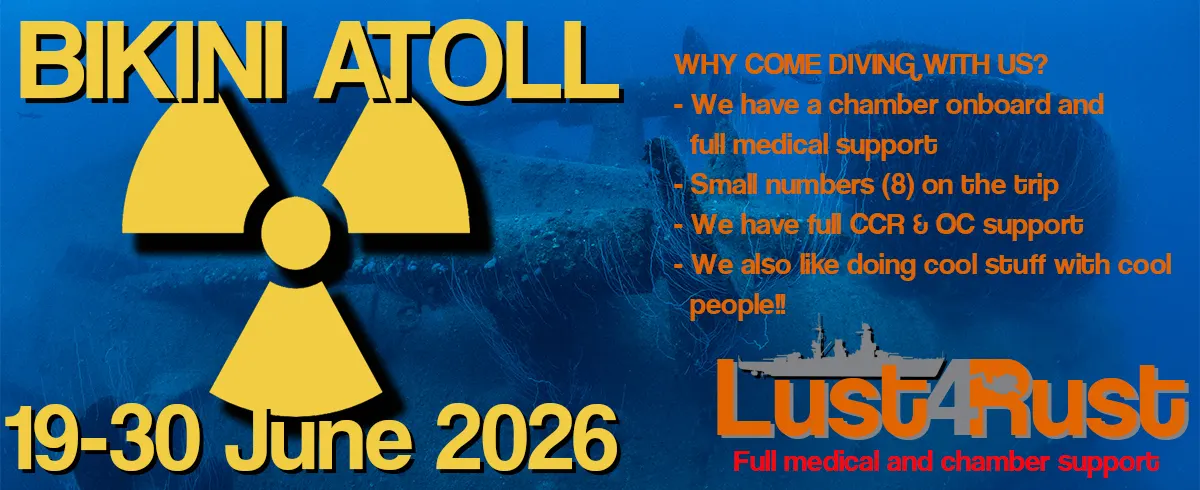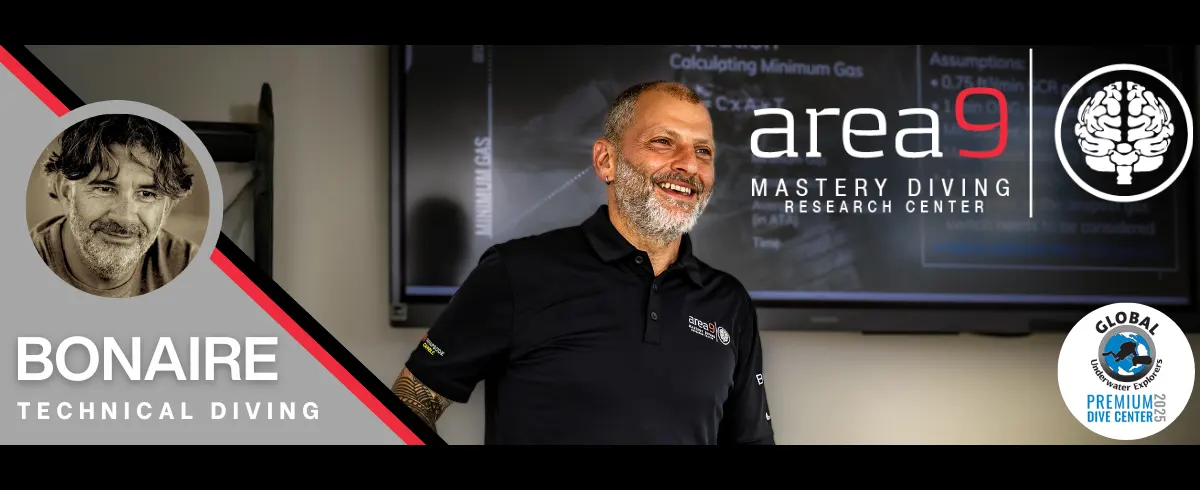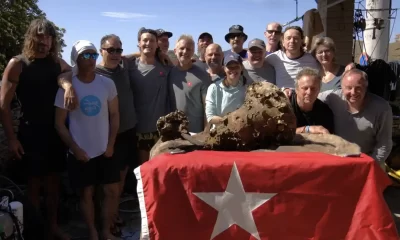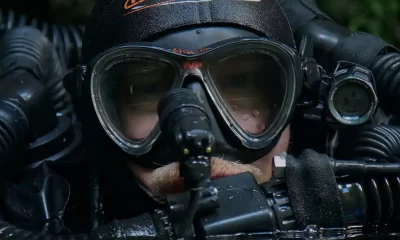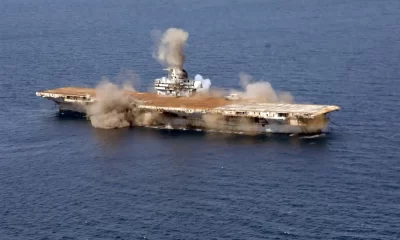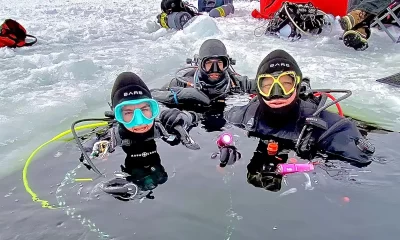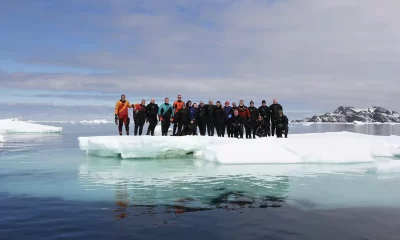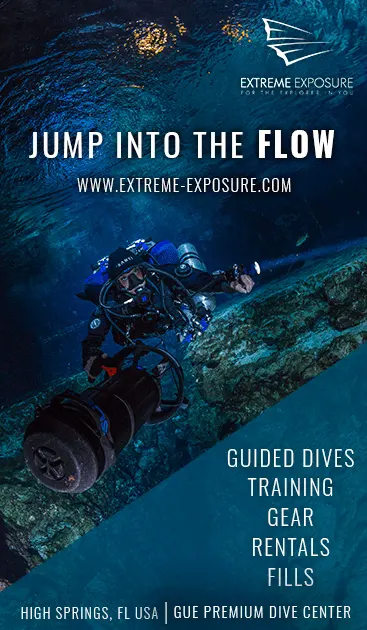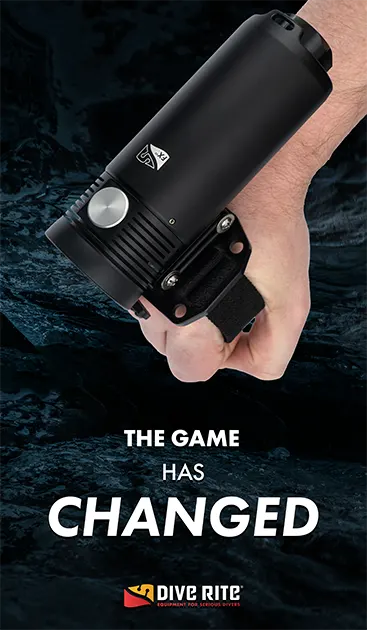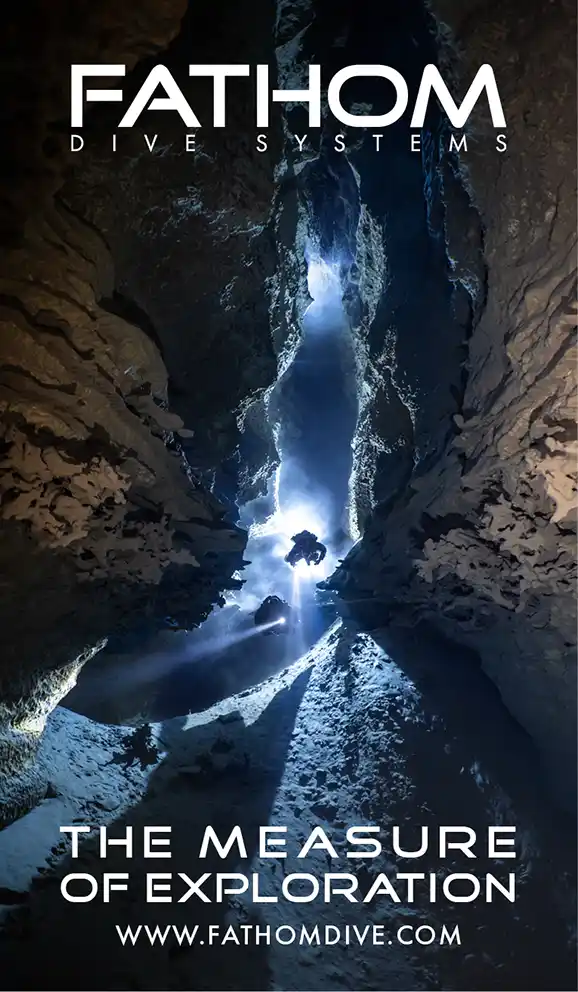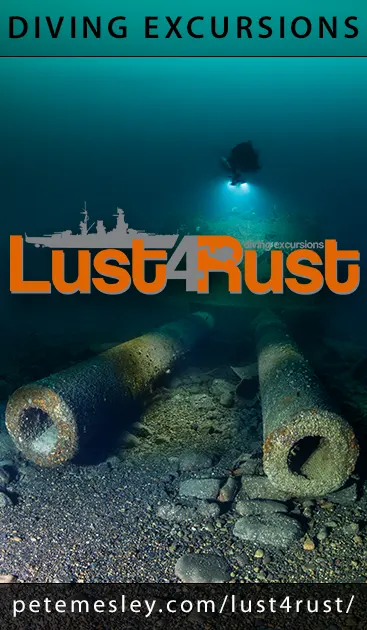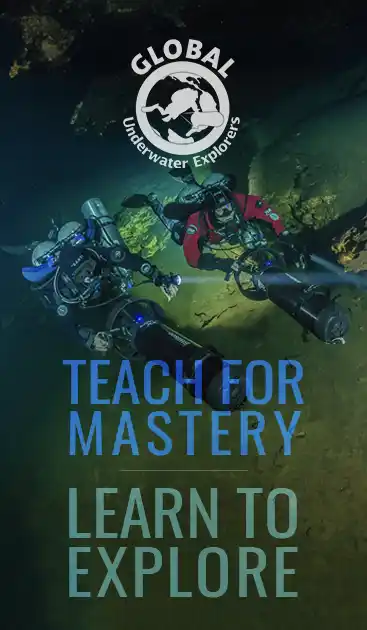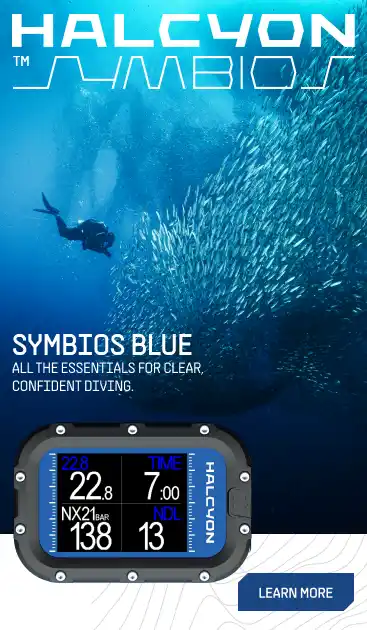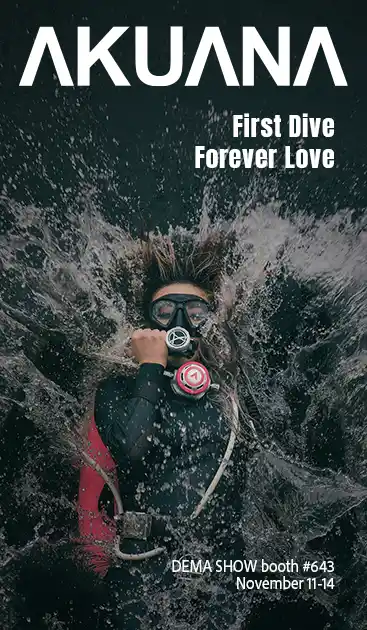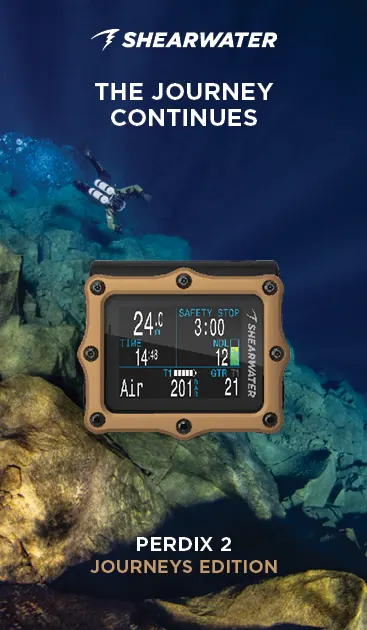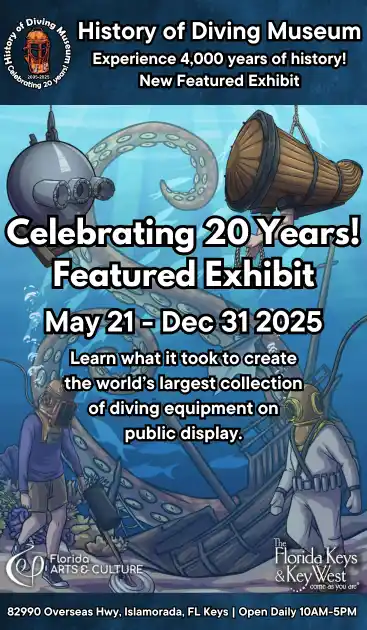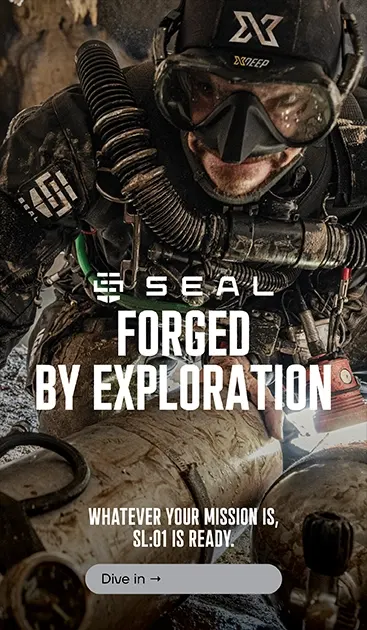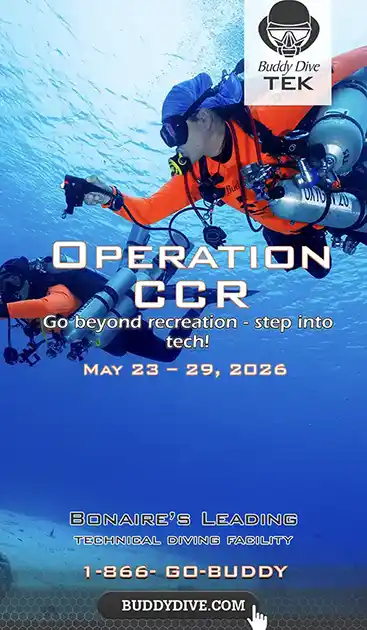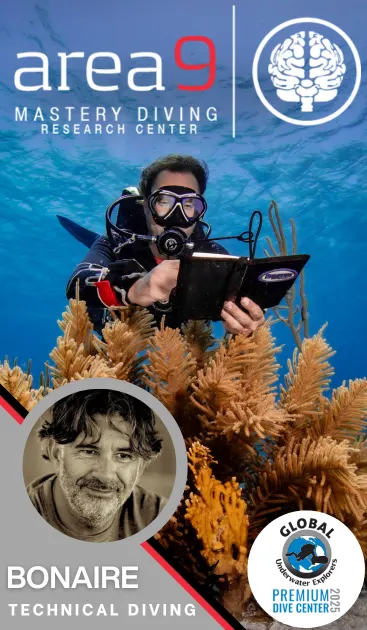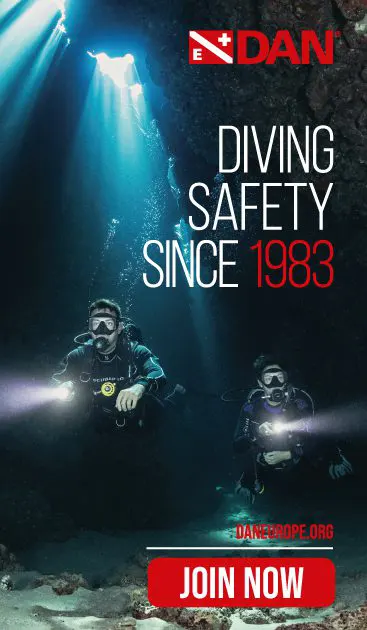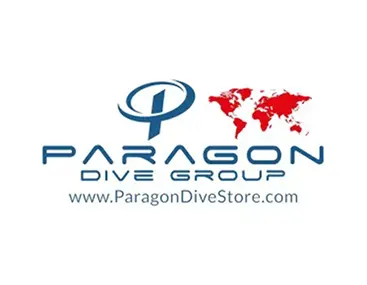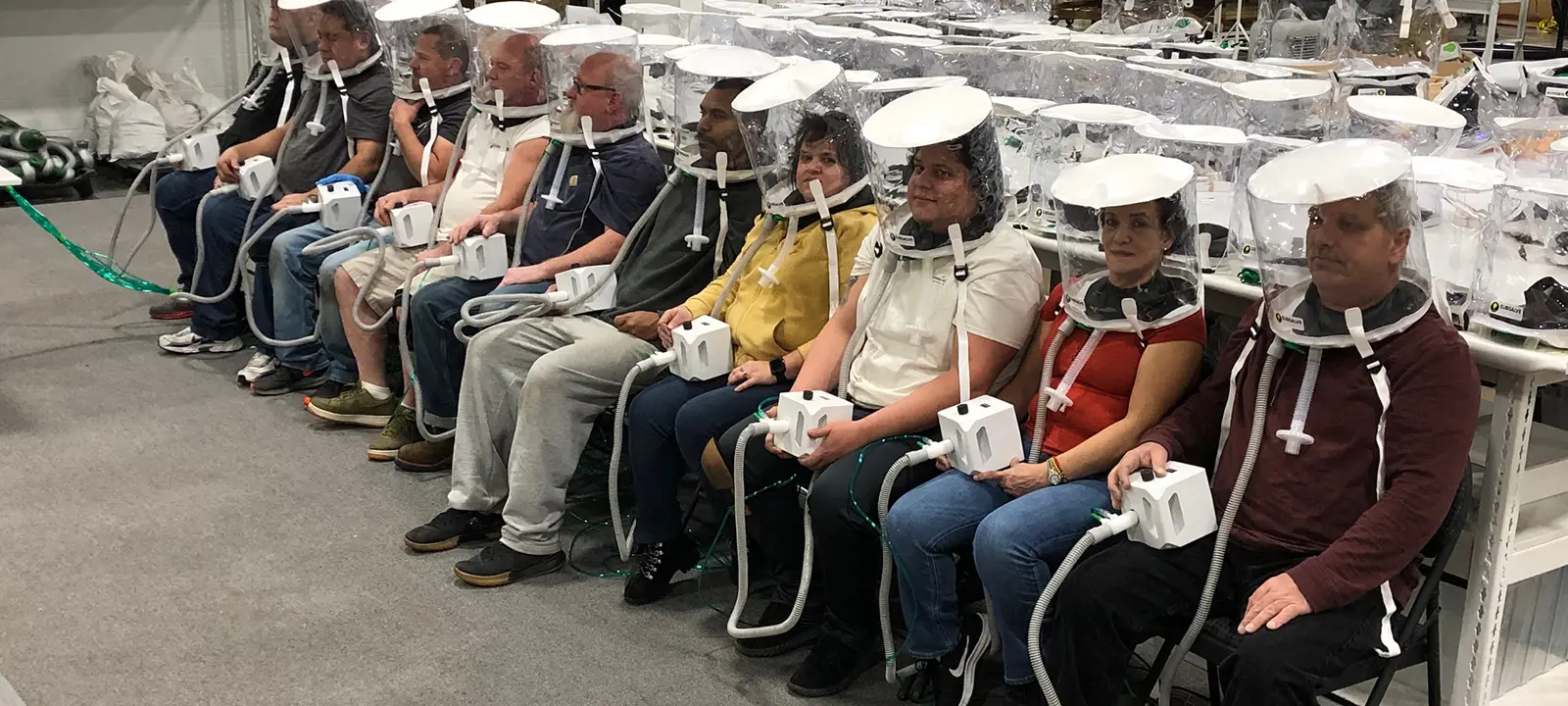
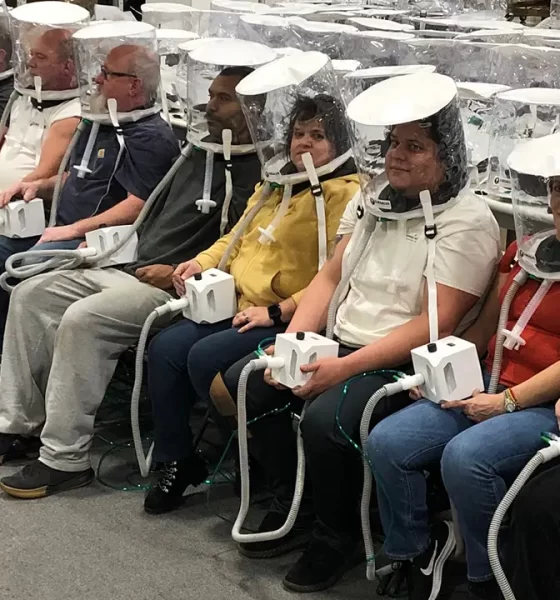
Latest Features
Dyspnea, Decompression & Pandemic Dividends
Respiratory problems resulting from COVID-19 provided the impetus and motivation for subsea engineer Mike Lombardi to develop—with the help of Subsalve USA—a new, effective helmet-based ventilation system to be used to treat those suffering from the deadly virus. Working through a variety of challenges and complications, the team ultimately designed, built, and distributed to all corners of the planet over 30,000 FDA-approved “oxygen therapy hoods” to help bring an end to the pandemic and save lives. Here is his story.
A diving industry response to the COVID-19 pandemic shows that the sea will continue to bring us life saving and transformative gifts
By Michael Lombardi. Images courtesy of the author unless noted.
I Can’t Breathe
It’s a horror that especially resonates with all of us as divers, and it was a desperate reality for millions of people during the COVID-19 pandemic. Like many, I watched the horrors unfold on nightly news in early 2020, though I did so through a unique lens as a career diving contractor. Troubleshooting and finding solutions to unique problems is the routine.
The disease itself was one problem and well beyond my paygrade, but affording treatment and taking mitigating steps to thwart stress on the respiratory therapy supply chain was something else… And then there it was—eureka—physicians in Italy had the solution. Images of emergency rooms full of patients with bubbles on their heads emerged. It resonated immediately, but what exactly was going on there?
I was intrigued by these bubble helmets, but timing amid a globally unravelling tragedy was critical. The pandemic had shut down many dive service contracts, so it was time to pivot to stay afloat. Within 24 hours, I gave myself a crash course in respiratory therapy 101. I was relieved and pleasantly surprised to learn that the principles in atmospheric management being used to ward off COVID-19-induced respiratory distress—CPAP (continuous positive airway pressure), BiPAP (bilevel positive airway pressure), and ventilator supported therapies—were virtually identical to those we use in rebreather development. So, my transition was easy, particularly as the timing coincided with our team bringing the RD1 rebreather to market. Further research revealed that the parts and pieces are virtually identical as well. “How hard can it be?” I thought, and, “What are these bubble helmets!?”
What is helmet based ventilation?
A Newfound Mission
Proceeding as if it were meant to be and my newfound mission, I made a few inquiries and learned that, historically, these helmets were used in a tiny niche within respiratory therapy techniques: non-invasive positive pressure ventilation (NIPPV). The principle: Create very slight positive pressure (centimeters of water, less than ½ a psi) to inflate the lungs, reduce dyspnea, and create a pressure differential to aid in oxygenation. Clinicians can achieve this with oronasal style masks, though the tight straps used to maintain a seal under high pressure can cause ulcerations around the airways.
Helmets are a transparent film balloon fitted with a neck seal and an inspiratory and expiratory port, though may also incorporate other accessory porting. Many practitioners have adopted helmets as an alternate interface to eliminate mask discomfort, reduce claustrophobia from having a tightly fitted mask, and permit improved clinician-to-patient interactions with an unobstructed view of the face. In the context of the pandemic, there was an added bonus: The expired breaths could be filtered at the helmet expiratory limb using a bacterial-viral filter, reducing aerosolized viral particles in healthcare settings. Wow! This makes total sense, I thought, so why weren’t we doing this in the US?

Supply and Demand
Within 72 hours of learning about helmet ventilation for myself, I received a handful of inquiries from within the US asking if I had the capacity to supply them; evidently, my past and ongoing work with customized rebreathers caught the right eyes. I love a good project; life handed me a lemon, so I made lemonade. Then the race started…
My first call was to Rick Fryburg at Subsalve USA—a brand local to me here in Rhode Island. I’ve collaborated with Subsalve on a variety of projects over the years, so I understood their capabilities in working with films and fabrics. Subsalve did their due diligence, contacting others within the US that produced similar inflatable helmets in the hyperbarics space. Two suppliers were already making commercially available units, but they were inundated with orders, and they faced supply chain challenges. The other, more important, complication was that these existing US helmets were neither designed for respiratory therapy nor cleared by the US Food & Drug Administration (FDA) for respiratory therapies.
A mishmash of regulatory approvals had cleared the devices for oxygen administration within hyperbaric chambers, creating a controlled bolus around the patient’s head and, therefore, eliminating the need to flood the entire chamber volume. This use modality does not require positive pressure delivery and, despite some physicians using these for respiratory therapies off-label, medical personnel were critical of design features that were not particularly well suited for NIPPV. The Italians had been at it for decades, with their design well advanced and configured specifically for respiratory therapies, though they were also not approved for distribution within the US.
For a very short few days of weighing risks and rewards, we got into the game. At the least, we could make a positive contribution to the pandemic response. At best, this may be a gateway into the medical device field.

Rick is a true craftsman. Within a day he produced functional prototypes,within a couple of days he locked down the materials supply chain, and within a week he dialed in a fluid but scalable production strategy. With some moving and shaking, I secured a purchase order for the first 1,000 units from the Rhode Island Emergency Management Agency (RIEMA), and the requests started pouring in.
We had units in New York area hospitals and on patients’ heads within two weeks. This was all high risk. We made every effort to meet expected regulatory requirements but, like other emergently developed medical devices during that time, nothing had been cleared by the FDA. The level of desperation from the medical community was stomach turning. I received countless calls and emails pleading for the device to be pushed through the FDA so it could be used in a more widespread fashion—many hospitals maintained strict policies on use of only FDA cleared devices, even in the face of dire ventilator shortages.

After the US government declared the pandemic a national emergency, the FDA opened up a program for Emergency Use Authorization (EUA) to fast-track device approvals. While still not a walk in the park, this was the required trajectory. I was tasked with very quickly fabricating a testing array that would satisfy the requirements for respiratory equipment to an ISO17510 equivalent; I then carried out the performance tests. Conveniently, these requirements were almost identical to test parameters and design considerations for diving apparatus.

Next up was drafting what the FDA calls ‘Instructions for Use’ (IFU)—analogous to what we call an Operations and Maintenance (O&M) document in diving. Stacked with letters of support and demand from leading physicians around the country, it was then time to undergo regulatory scrutiny—for almost four months—all the while still delivering the device to meet demand. The FDA eventually cleared the Subsalve Oxygen Treatment Hood in August of 2020, making it the first helmet-based ventilation system of its kind in the US specifically intended for respiratory therapy.
While this process was still lightning-fast, by way of medical device approvals, the lag did create issues with integrating the technique within the US healthcare system. Prior to our EUA, the US healthcare system was only scarcely using the helmet ventilation protocols for respiratory therapy. It became obvious that, despite the beauty in its simplicity, we needed to overcome a learning curve and amend the protocol playbook. Physicians at leading hospitals (including within the VA Medical System) developed protocols and put the technique to use. This remains an open opportunity community-wide, and standards still need to be developed.

International aid relief
As things quieted down in the US, there were bursts of pandemic panic and healthcare system overburdens throughout the world, often in areas that lacked critical care infrastructure. Ventilator shortfalls were horrifying, and any level of pressure support was being considered. One nurse from Brazil sent a video of their staff duct taping a trash bag over a patient’s head and supplying fresh gas to generate some pressure. Doctors in Bolivia said that more than 400 people died in the streets in one weekend while in line to access a medical clinic. The horror stories kept coming, and so our mission transitioned a bit from filling a pressure therapy supply shortfall to humanitarian aid.
In partnership with multiple university-affiliated clinicians, aid groups, and concerned citizens, we distributed more than 30,000 devices to all corners of the planet: Bolivia, Brazil, Mexico, Guatemala, Honduras, Costa Rica, Iraq, Pakistan, Lebanon, Kuwait, Saudi Arabia, Nigeria, Bangladesh, India, and Ukraine, to name only a few.
If you struggled to source a drysuit from 2020-2022, it was all our fault! We procured some 35,000 neck seals from every available supplier to support the project. Recognizing this limitation, manufacturers developed a new style of very supple silicone neck seal. We now use them in our underwater presentation helmet as well as in the oxygen treatment hoods.
There were a few particularly hard-hit areas that I personally invested in quite heavily. Bolivia was the effort I’m most proud of; together with a group called Los Medicos Bolivianos, the local Anglican Church, and Rotary International, we brought effective therapy into some very rural areas where there were no chances of the community gaining access to modern medicine. We and our collaborators saved lives, and it felt like a mission accomplished even though tragic stories and frenzied pleas for help continued to cross my desk. It was emotionally overwhelming, to say the least.

By month 10 or so of start-up exhaustion, other players emerged, so demand did diminish somewhat. However, an outstanding need kept resurfacing: there was a know-how gap in administering the treatment, and everyone had their own approach, based on the resources available to them.
For a period of time, I was rounding to local hospitals to train staff and doing my best to deliver the information internationally. I did a Zoom training session for a group of nurses in Pakistan, of all places. It quickly became obvious that, in order to advance past pandemic response, we needed to better build out our body of knowledge here. There’s a tremendous opportunity here, though it’s better suited for those in the respiratory field… I’m “just a diver.”
Technology and Techniques
Creating positive pressure in a helmet requires a flow of gas. This gas can come from most anywhere if it’s clean enough to be breathable. Medical settings have multiple options: plumbed wall gasses, ventilators, BiPAP machines, CPAP machines, and venturi devices, among others. So, while we were delivering the patient interface (the helmet), there were still gaps to fill at the treatment locations. It turned out to not always be a straightforward, plug-and-play technique; it required some science to implement effectively.
Via rapid testing in-house, we quickly learned that the respiratory circuit—the collection of tubes, fittings, and valves required to connect the helmet to any given flow source—varied somewhat depending on the gas source. The fixed variable we sought was sufficient flow through the helmet to wash out CO2. Clinicians recommend a conservative 60 liters per minute (lpm), though our testing revealed that 40 lpm is sufficient for an average adult—even as low as 30 lpm for a person at rest who isn’t producing much CO2. In all cases, that’s a lot of gas.
One of the complications we faced was that electrical devices such as ventilators, BiPAPs, and CPAPs all responded differently to back pressure in the circuit, often not delivering sufficient flow rates to wash out CO2 in this large volume of helmet space. These devices were engineered to deliver and maintain pressure, not flow. An additional complication was that clinicians wanted to supplement the flow with pure oxygen to boost the delivered FiO2. We were, essentially, creating personalized nitrox blending systems within miniature hyperbaric chambers at ultra low pressures.


Yet another complication was the short supply of pure oxygen globally. The copious volumes needed to boost FiO2 within high flows were just not readily available in many places. We then started looking at closing the helmet respiratory circuit while maintaining positive pressure. Through collaborative work with anesthesiologists at the University of Colorado, we successfully demonstrated a positive pressure, closed-loop device that reduced oxygen consumption to 1 lpm while maintaining high FiO2s. Sound familiar?
By the time of this discovery, the emergent demands of the pandemic had waned. Reality set in: We had done our part during a critical time, but it was not yet the time or place to embed a technique into the standard of care. So, our three years were well spent, but the bubble had burst, so to speak… Back to diving.

Ongoing research
The pandemic response investment is paying a number of dividends in the way of ongoing research projects. Of note is work with the University of Rhode Island, where researchers utilized a pulmonary simulator to study helmet ventilation techniques against various disease models including pneumonia and COPD. This work is ongoing, and paper submissions are in the peer review phase. The importance of this work cannot be understated; helmet ventilation efficacy absent supplemental oxygen has been an open question, and there is reason to believe (and data to prove) that we can use positive pressure alone for certain indications to boost blood oxygenation. Further, recently published work on Immersion Pulmonary Edema (IPE) suggests that NIPPV via CPAP is a viable therapy for the condition. It would not be difficult to incorporate a venturi-driven positive pressure helmet into a diver’s oxygen first aid kit.
The frenzy to address depleted oxygen supplies during the pandemic may not have been warranted. The medical field may have overlooked pressure support itself, or PEEP (positive end expiratory pressure) via CPAP, as a broadly life-saving modality during the pandemic. This approach may offer new insights into patient management moving forward, emphasizing mitigation strategies at very early onset respiratory distress.
This outcome further sheds some new perspective on the use of both pressure and oxygen across the full dosing spectrum from nasal canula (100% O2 delivered, though only 35% inspired) right up to conventional 2 ATA+ hyperbarics. There have become arguments to consider a wide variety of technologies and techniques that are often overlooked including the middle ground referred to as ‘mild hyperbarics’ which is considered taboo given safety concerns outside of clinical settings.
However, used appropriately, there are opportunities in this space. For example, I’d much prefer to receive an oxygen treatment at 1.0 bar or greater over a nasal canula which is just wasting 65% of the delivered oxygen. Similarly, an added alveolar exchange boost via a few centimeters of water pressure may make lower FiO2 deliveries just as effective as higher FiO2 deliveries at ambient pressure. The methods to get there can be readily achieved via soft helmets and soft chambers, and combinations of devices not yet exhaustively considered, including rebreathers, to reach the full dosing spectrum of 0.35 to 2+ bar. There are dosing strategies that can be implemented bedside or at home. If embraced as a body of work, a clinical practitioner of both pressure and oxygen across the full dosing spectrum then becomes a resource for everything from dyspnea to decompression, and is a true purveyor of yet more gifts from the sea.
DIVE DEEPER
InDEPTH: What is A Ventilator And Why Is It So Important? By Andy Pitkin
InDEPTH: Czech Diving Equipment Manufacturer Uses Expertise to Help Create Medical Ventilators
InDEPTH: Are Oxygen Rebreathers Useful Tools for Tekkies and Sci-divers? by Michael Lombardi
InDEPTH: Professor achieves an underwater first – ‘camping’ by Michael Lombardi

Michael Lombardi is a diving scientist, technologist, and contractor based in Rhode Island. He is fully immersed in numerous aspects of the undersea industry with a keen focus on advancements in diving technology. Together with multiple partners across industry and academia, Michael has successfully designed/built and deployed custom rebreathers, underwater habitats, various tooling and inspection apparatus, and medical devices all to meet niche and purposeful requirements. More on his work can be found at www.oceanopportunity.com and www.lombardiundersea.com.


